Looking for the ultimate Cyprus Travel Guide? You’ve found it. This beautiful Mediterranean island is famous for its golden beaches, ancient ruins, and lively towns – but it’s also full of hidden villages, mountain monasteries, and cultural gems that reward slow exploration.
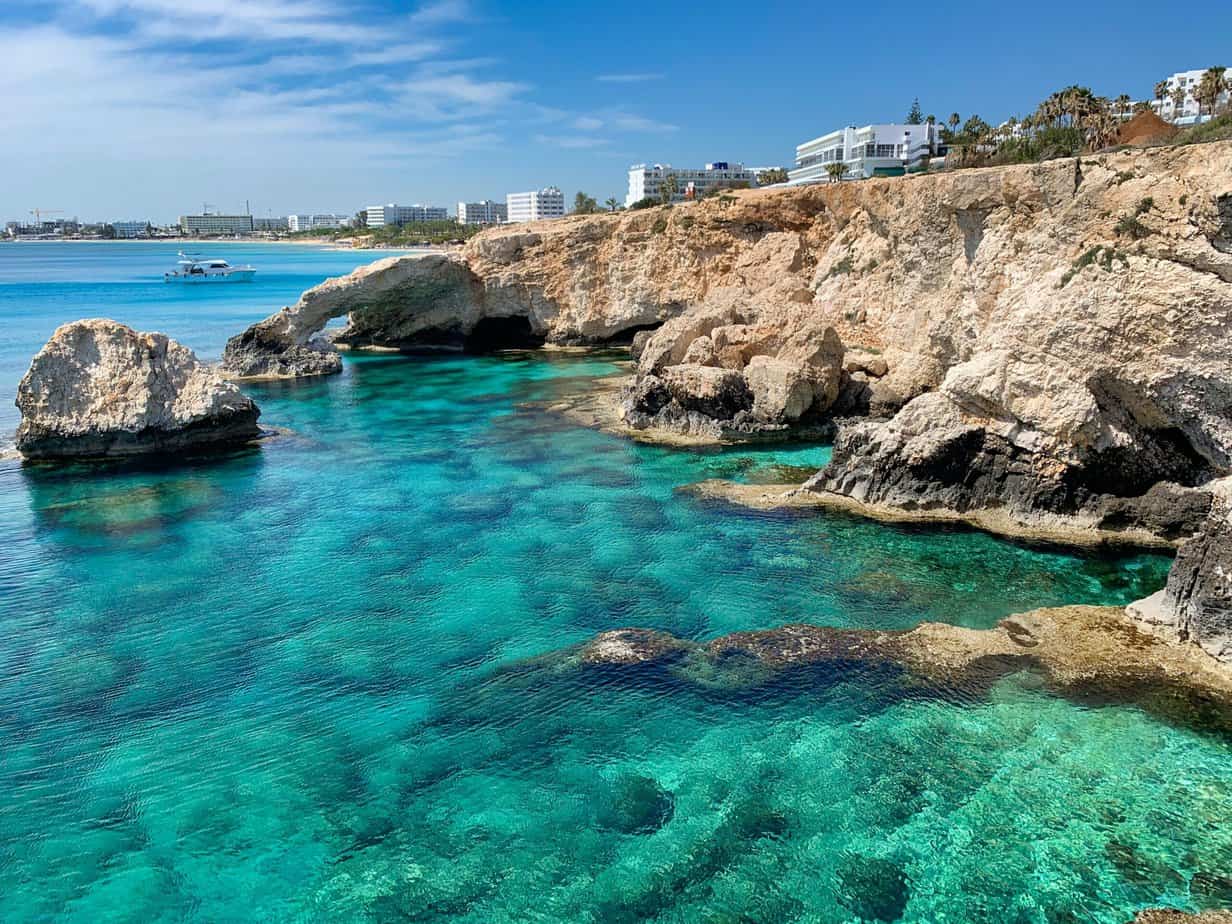
I may earn a small commission if you make a purchase using my affiliate links.
I’m Hazel, a British travel blogger with a soft spot for islands, and Cyprus quickly became one of my favourites. I love how you can spend the morning exploring Roman ruins, the afternoon hiking in the Troodos Mountains, and the evening tucking into mezze at a family-run taverna by the sea.
This guide brings together my passion for travel, my love of Cypriot culture, and practical tips to make your visit as easy and enjoyable as possible.
So, Where Exactly is Cyprus? 🏞️
Cyprus is a sun-drenched island in the eastern Mediterranean, floating just south of Turkey and west of Syria and Lebanon. It’s the third-largest island in the Med, and one of the most culturally intriguing.
Thanks to its history and geography, Cyprus blends Greek and Turkish influences with a splash of British heritage too (they even drive on the left!).
Cyprus Facts: Know Before You Go 📊
⏰ Time zone: GMT+3
💶 Currency: Euro (€)
🗣️ Languages: Greek and Turkish (English widely spoken)
🔌 Plug type: Type G (UK-style three-pin plugs)
✈️ Flight time from London: Around 4.5 hours
🚗 Drives on: The left side of the road
Landscape & Nature in Cyprus 🌿
From golden beaches to misty mountain trails, Cyprus is an island of contrasts. The Troodos Mountains slice through the centre, while the coastlines offer everything from lively resorts to secret coves. Ancient ruins peek through olive groves, and the whole island smells like wild herbs and citrus.
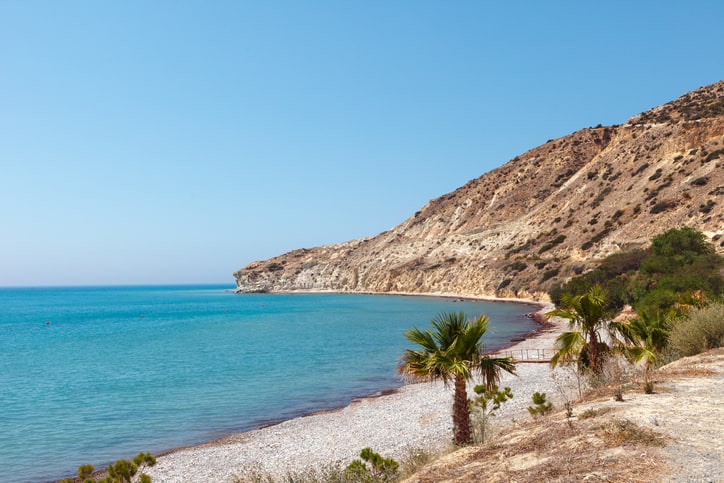
Map of Cyprus 🗺️
Here’s a handy map to help you get your bearings and pin all the must-visit spots across the island.
Getting to Cyprus & Getting Around ✈️
Getting there: Two main airports: Larnaca (LCA) and Paphos (PFO), with direct flights from major European cities. Ferries also run from Greece and Israel.
Getting around: Renting a car gives the most freedom, especially for mountain or monastery-hopping. I recommend Discover Cars for car hire. Public buses are affordable but don’t reach everywhere. Taxis and private transfers are also widely available.
When to Visit Cyprus ☀️
🌸 Spring (April–May): Wildflowers, perfect hiking weather, fewer tourists.
🌞 Summer (June–August): Hot and buzzing, best for beaches and nightlife.
🍇 Autumn (Sept–Oct): Warm seas, wine harvests, quieter vibes.
❄️ Winter (Nov–March): Mild, great for exploring ruins and mountains.
Towns in Cyprus 🏛️
- Nicosia: The world’s last divided capital, with an atmospheric old town.
- Limassol: A buzzing seaside city with beaches and nightlife.
- Paphos: Family favourite with ancient ruins and laid-back vibes.
- Larnaca: Coastal charm, churches, and calm beaches.
- Ayia Napa: Party town with postcard-perfect beaches.
- Troodos Villages: Traditional charm and cool mountain air.
- Kyrenia & Famagusta (North): Cross the border to explore history and the haunting ghost town of Varosha.
👉 Read more: 8 of the Best Towns in Cyprus to Visit.
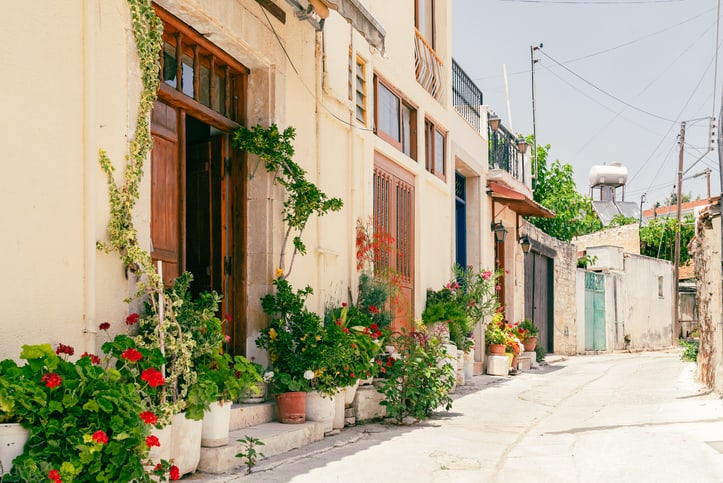

Top Sights and Must-Dos in Cyprus 🏞️
🏛️ Roman Ruins: Explore Kato Paphos & Tombs of the Kings.
🏖️ Beaches: Swim at Nissi Beach, Fig Tree Bay, or Lara Bay.
🥾 Hiking: Tackle trails in Akamas National Park or the Troodos Mountains.
⛪ Monasteries: Visit Kykkos or Stavrovouni for history and views.
🕌 Northern Cyprus: Discover Famagusta, Kyrenia, and the ghost town of Varosha.
⛵ Blue Lagoon: Sail from Latchi into turquoise waters.
👉 Read more: 20 Amazing Things to Do in Cyprus | 10 Fantastic Things to Do in Paphos.
Monasteries in Cyprus ⛪
Cyprus is packed with gorgeous monasteries tucked into pine forests, clinging to cliffsides or hidden in mountain valleys. Each one offers something special, from shimmering frescoes to breathtaking views and a peaceful atmosphere.
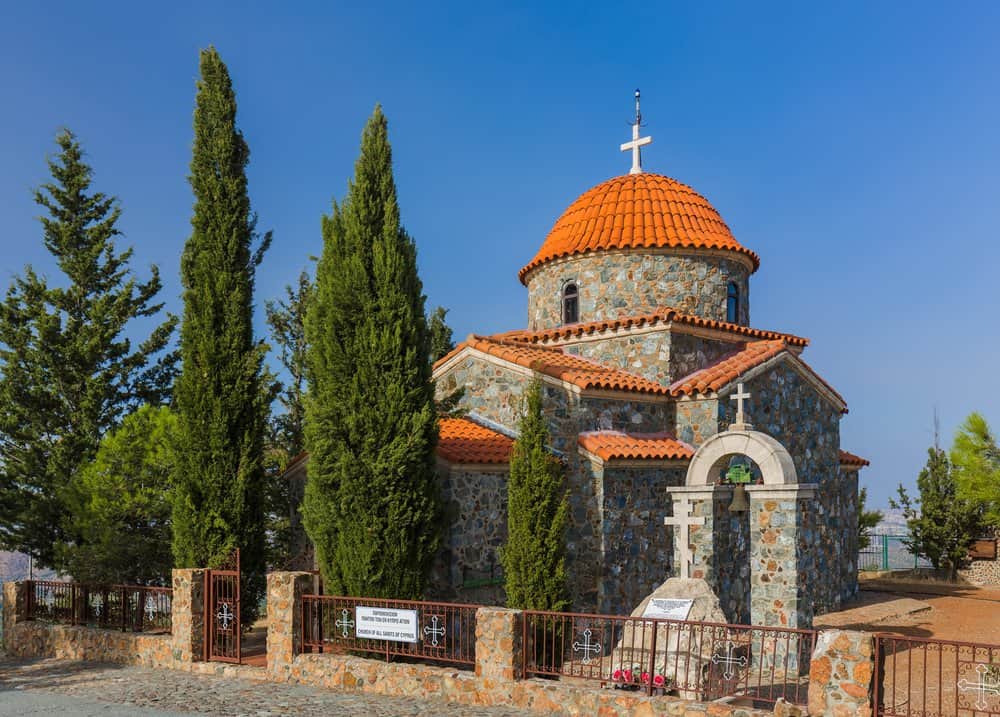
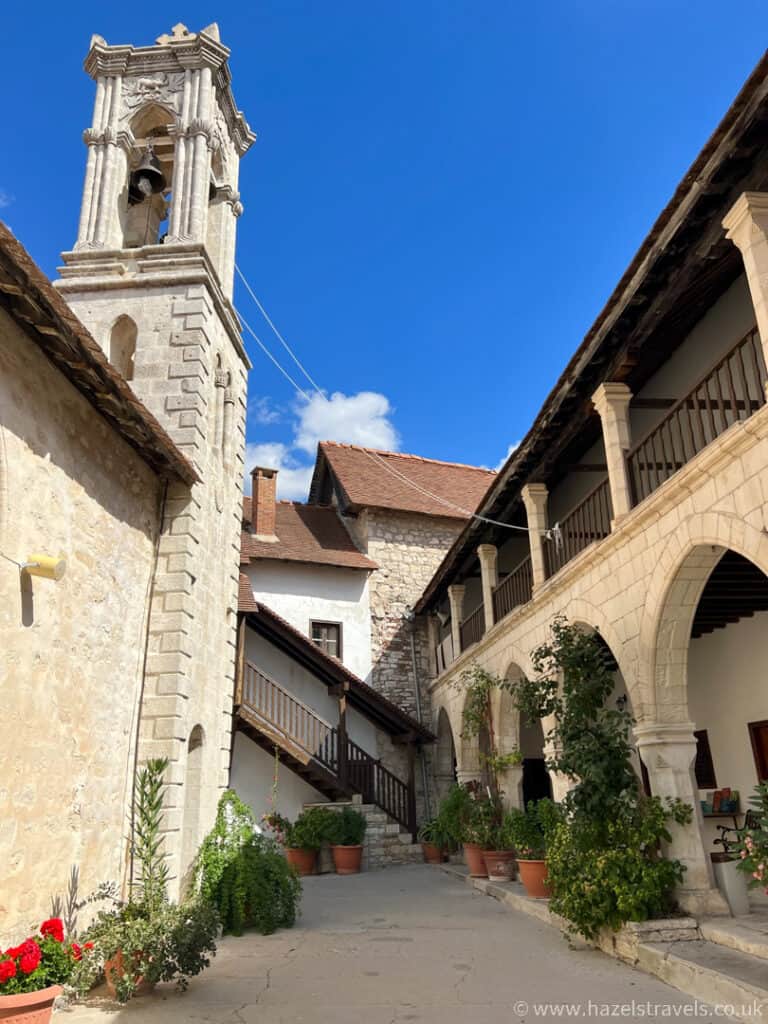
Don’t miss:
- Kykkos Monastery: The most famous, tucked high in the Troodos
- Stavrovouni: Perched on a dramatic peak near Larnaca
- Bellapais Abbey: A medieval gem in Northern Cyprus
- Panagia Chrysorrogiatissa: Complete with its own winery!
👉 Read more: 15 Monasteries in Cyprus | Hotels near Cyprus Monasteries.
Best Beaches in Cyprus 🏖️
Dreamy coves? Tick. Family-friendly sands? Tick. Crystal-clear water and epic sunsets? Absolutely. Here are some standouts:
- Nissi Beach (Ayia Napa): Lively, golden, and shallow, ideal for swimmers.
- Fig Tree Bay (Protaras): A classic, with perfect water and water sports.
- Lara Bay (Akamas): Wild, remote, and home to nesting turtles.
- Coral Bay (near Paphos): Great for sunbathing and snorkelling.
- Golden Beach (Karpaz Peninsula, North): Blissfully undeveloped and spectacular.

👉 Read more: 12 Best Beaches in Cyprus (and Northern Cyprus).
Crossing into Northern Cyprus 🚧
Cyprus is famously divided. The southern part is the Republic of Cyprus, and the north is the Turkish Republic of Northern Cyprus (TRNC), only recognised by Turkey. Crossing between the two is straightforward, but there are a few things to keep in mind.
Why Visit the North?
Northern Cyprus is full of hidden gems: think dramatic castles, charming villages, golden beaches, and the haunting Ghost Town of Varosha. Highlights include:
- Famagusta: A city of crumbling cathedrals and Venetian walls
- Kyrenia (Girne): A pretty harbour town with a medieval castle
- Bellapais Abbey: A peaceful mountaintop monastery
👉 Read more: Day Trip to Famagusta & Varosha: 1 Day Cyprus Itinerary.
How to Cross the Border
There are several checkpoints, but the most popular ones include:
- Ledra Palace and Agios Dometios in Nicosia
- Beyarmudu (Pergamos) near Larnaca
- Deryneia for visiting Famagusta/Varosha
What you need: A valid passport or EU ID card. Most travellers don’t need a visa for a short visit. Just walk or drive through, and your documents will be checked at both sides.
Things to Know
- You can bring your rental car only if allowed by your rental company – check the terms.
- Local insurance is required for driving in the north.
- Don’t fly into the north (Ercan Airport) if you want to enter the Republic afterwards – it can complicate things.
- Respect cultural sensitivities and avoid political discussions – it’s a complex topic.
👉 Read more: Cyprus Border Crossings Explained: Which One Should You Use?
Quick Tips for Visiting Cyprus 📝
🧥 Layers: It’s often 10°C cooler in the Troodos Mountains than on the coast.
🧣 Cover up: Take a scarf or shawl for visiting monasteries and churches.
🛂 Border crossings: Carry ID and check opening times before heading north.
🧴 Sunscreen: Essential year-round, even in spring or autumn.
Itineraries for Cyprus 🗓️
Need help planning your days? Here are some easy-to-follow Cyprus itineraries packed with coastal drives, cultural gems, and historic sites:
🗓️ Cyprus Coast Road Trip: 5 Days Along the Island’s Shores.
🗓️ 2 Days in Paphos: A Myth & History-Filled Itinerary.
🗓️ Troodos Day Trip: Villages, Wine & Nature in the Cyprus Mountains.
🗓️ Nicosia Day Trip: Exploring Europe’s Last Divided Capital.
🗓️ Day Trip to Famagusta & Varosha: 1 Day Cyprus Itinerary.
What to Eat & Drink in Cyprus 🍴
- Halloumi: Grilled squeaky cheese that’s a national treasure.
- Souvlaki: Skewers of juicy meat with salad and flatbread.
- Stifado: Hearty beef stew with cinnamon.
- Loukoumades: Little honey-soaked doughnuts.
- Baklava: Sweet layers of pastry and nuts.
- Cyprus wine: Try the local Commandaria dessert wine.
- Coffee: Served strong and sludgy in tiny cups – sip slowly!
👉 Read more: Food in Cyprus: 12 Delicious Dishes and Drinks You Need to Try.
Where to Stay in Cyprus 🏨
- Luxury lovers: Try Elysium in Paphos, or Four Seasons Hotel in Limassol.
- Beach bums: Stay near Nissi Beach or Coral Bay.
- Culture fans: Base yourself in Nicosia or a Troodos village.
- Quiet escapes: Look into eco-lodges or winery stays inland.
👉 Where to Stay in Cyprus: 11 Best Areas & Hotels
Map of Hotels in Cyprus 🏨
Here is a map from Booking.com showing hotels by location. You can pinch and move the map, or click through to Booking.com to see your options.
Top Tours in Cyprus 🎟️
Want to see the highlights without the hassle? These tours are a great way to dive deeper into Cyprus.
🎟️ Blue Lagoon boat trips from Latchi.
🎟️ Troodos Mountains wine tours.
🎟️ Northern Cyprus day tours (Kyrenia, Famagusta & Varosha).
🎟️ Village food tours & cooking classes.
Sustainable Travel Tips for Cyprus 🌱
Love Cyprus? Travel kindly with these easy tips to keep the island beautiful for generations to come.
- Stay in family-run guesthouses or eco-hotels.
- Use refillable water bottles and reduce plastic.
- Be respectful of local culture and religious sites.
- Stick to marked trails to protect fragile ecosystems.
- Support local artisans and food producers.
FAQs for Cyprus Travel 💡
Got questions about Cyprus? Here are the answers to the most common things travellers want to know before they go.
Cyprus is considered a safe destination. Crime rates are low, and it’s safe for solo travellers, couples, and families. Of course, it’s still wise to keep an eye on valuables in busy areas, lock your car, and take the usual precautions.
If you’re from the EU, UK, or Schengen countries, you don’t need a visa – just a valid passport or ID card. Travellers from outside Europe may require a visa, depending on nationality. Always check with your local Cypriot embassy before you travel.
Yes, tap water is safe to drink in most of Cyprus. That said, many people prefer bottled water for taste, especially in rural or mountain areas. Carrying a reusable bottle you can refill is both practical and eco-friendly.
English is widely spoken in tourist areas, hotels, restaurants, and even on road signs. Greek is the most common language in the south, Turkish in the north, but English is common for communication with visitors.
Summer (June–August) is hot and lively, with warm seas and long beach days. Spring and autumn are perfect for hiking, sightseeing, and quieter travel. Winter is mild and ideal for cultural trips and mountain escapes.
Cyprus is easy to explore with a rental car (I recommend Discover Cars). The roads are well-maintained, and driving is on the left (like in the UK). Public buses are cheap and connect the main towns, but don’t reach remote spots. Taxis are widely available, and guided tours are a good option if you don’t want to drive.
Yes – border crossings are open and straightforward for most people. You’ll usually just need your passport or EU ID, although some nationalities will need a visa. See the dedicated section above for full details on how to cross, what to expect, and what to see.
Cyprus can suit most budgets. Eating at tavernas is affordable, while resorts and fine dining can be pricier. Accommodation ranges from luxury beach resorts to budget guesthouses. Expect similar costs to Greece or Spain.
ATMs are widely available, and most hotels, shops, and restaurants accept credit/debit cards. It’s still good to carry some cash for small villages, markets, or monasteries. Remember the currency in Northern Cyprus is the Turkish Lira, although some places still accept Euros.
Related reading for Cyprus Travel Guide 📚
Below are some more posts related to this Cyprus Travel Guide.
🚗 Cyprus Coast Road Trip: 5 Days Along the Island’s Shores
🏛️ 2 Days in Paphos: A Myth & History-Filled Itinerary.
🌄 Troodos Day Trip: Villages, Wine & Nature in the Cyprus Mountains.
🕌 Nicosia Day Trip: Exploring Europe’s Last Divided Capital.
🏨 Where to Stay in Cyprus: 11 Best Areas & Hotels.
🌊 10 Fantastic Things to Do in Paphos, Cyprus.
✈️ Cyprus Travel Guide: Advice for Visiting Cyprus.
Quick Links for Cyprus
Here are some quick shopping links to help you with your trip to Cyprus.
- You can book a tour to take care of the Turkish border crossing for you.
- Book the best 5 star luxury hotel in Cyprus here.
- Here are the best deals on all Cyprus hotels.
- It gets very hot in Cyprus. You need decent sunscreen and a packable sun hat.
- A Turkish phrase book might come in handy.
- Book your Cyprus rental car here.
Pin it for later – Guide to Visiting Cyprus 📌
If you have enjoyed this Cyprus Travel Guide, feel free to use the below Pinterest images to pin this post to your Pinterest account for reading later.
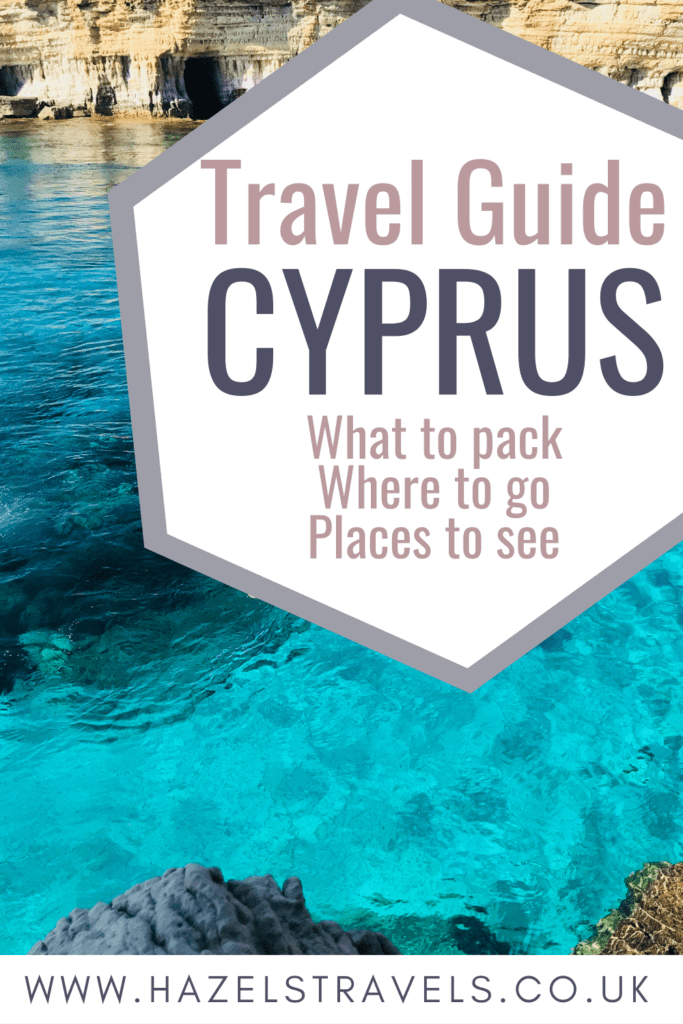
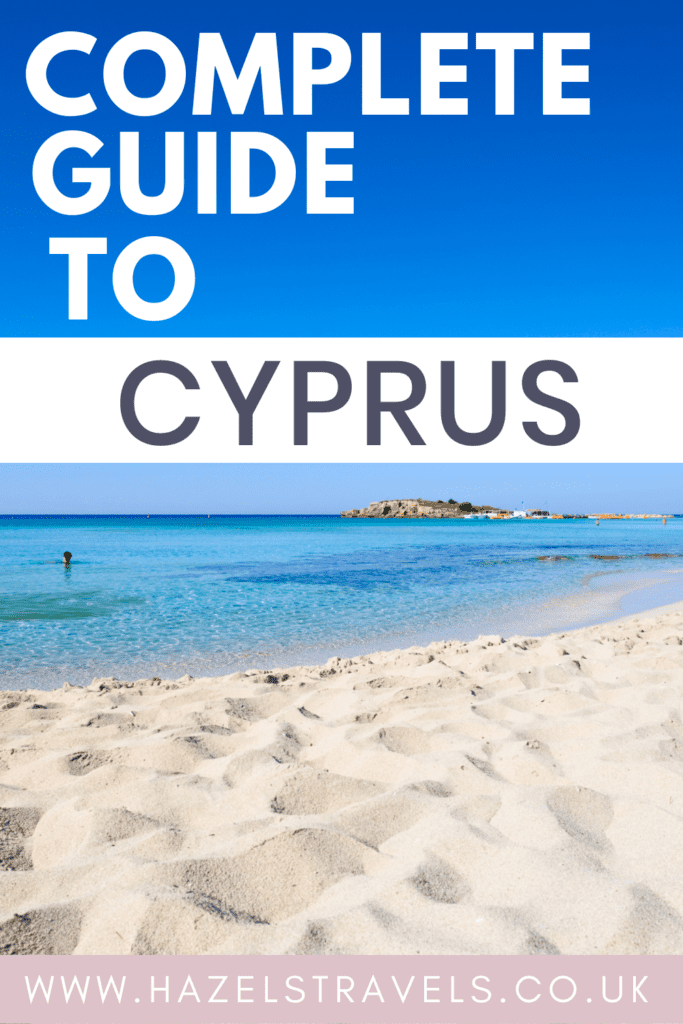
👉 Looking for practical travel tools? Check out my Travel Resources page.
Tags: Cyprus, Europe
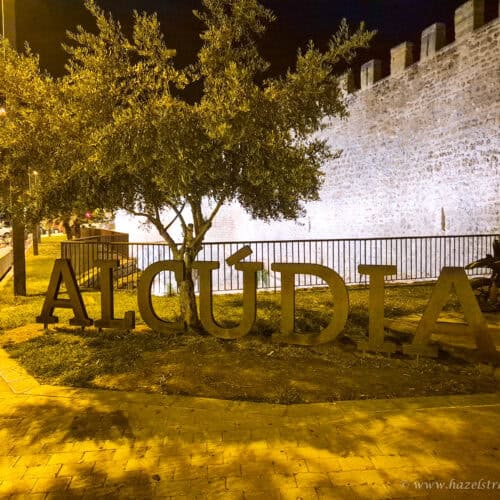
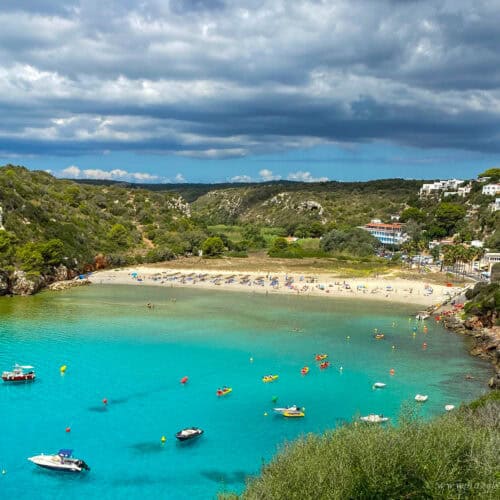
I was having a hard time finalizing my itinerary before applying for “Cyprus Visa UK”. So, I scoured through travel guides and came across yours which helped me pick some good spots for my 1-week trip. Hoping to have a wonderful time in this beautiful country.
Thank you, Cyprus is a wonderful country. I can see you are offering a Visa application service, which my readers may find useful.
This post was such a refreshing read! I appreciate the depth of insight you provided. It’s rare to find content that strikes the right balance between informative and enjoyable to read. Keep up the great work!